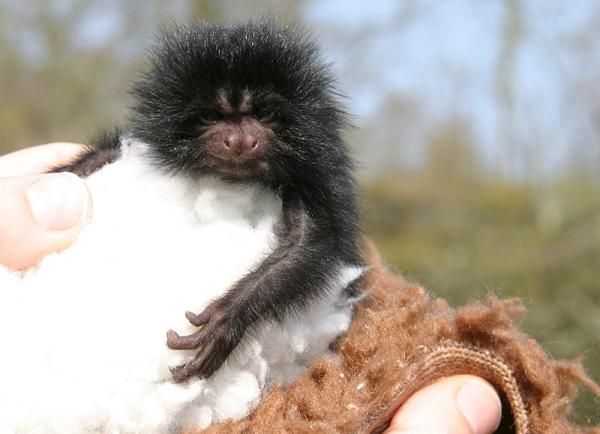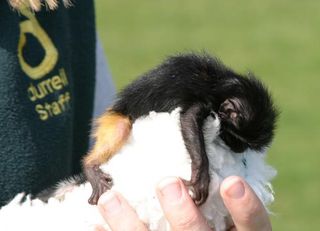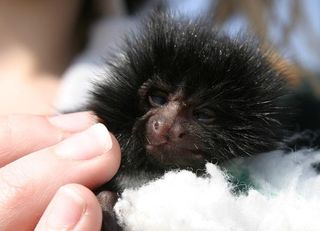
Tiny Monkey Born by C-Section

A baby black lion tamarin, a species of critically endangered monkey, was just born at a wildlife conservation park in England, delivered by cesarean section.
The tiny monkey was born on March 22, the first birth of a black lion tamarin outside of its native Brazil in eight years. Keepers at Durrell Wildlife Conservation Trust said both mother Roxanne and baby Francisco, named for the doctor who delivered him, are doing well. [Related: In Images, Brazil's Most Threatened Forest ]
"This birth is great news; monitoring and successfully delivering the baby has been a very tricky event to manage," said Mark Brayshaw, head of Durrell's animal collection, in a statement.
Roxanne had previously lost two babies and suffered several miscarriages, so staff decided to monitor her four-and-a-half-month pregnancy carefully and to deliver the baby by C-section.
At the park, all of Durrell's tamarins have been trained to sit on scales so that they can be weighed remotely. Roxanne had also been trained to allow keepers to monitor her by ultra-sound through the enclosure mesh. This was done almost every day for a few months with a fake ultrasound device, so that when she did get pregnant the team could check the development of the fetus without anesthetizing her.

Black lion tamarins are small monkeys, growing to only about 10 to 13 inches (25-33 centimeters) in length. Their long, silky black manes lend them their ferocious name. The species is also sometimes known as the golden-rumped lion tamarin because of a patch of golden hair on its rear.
The fingers of black lion tamarins are long and dexterous, as are those of the other lion tamarin species, and the monkeys are clever in proportion to their body size, they have more grey matter than humans.
Sign up for the Live Science daily newsletter now
Get the world’s most fascinating discoveries delivered straight to your inbox.
The monkey infant is being hand-reared and syringe-fed every two hours throughout the day and night. Over the next few weeks, park staff will slowly teach him to lap milk from a dish; when he's able to do this successfully he can be returned to his family.

"There is still a very long way to go to ensure that the captive population's viability is assured, but this is most definitely a step in the right direction," Brayshaw said.
With Francisco's birth, the park is now home to nine black lion tamarins. The institution's breeding program has successfully reintroduced some of their monkeys to the wild in the forests of Brazil.











